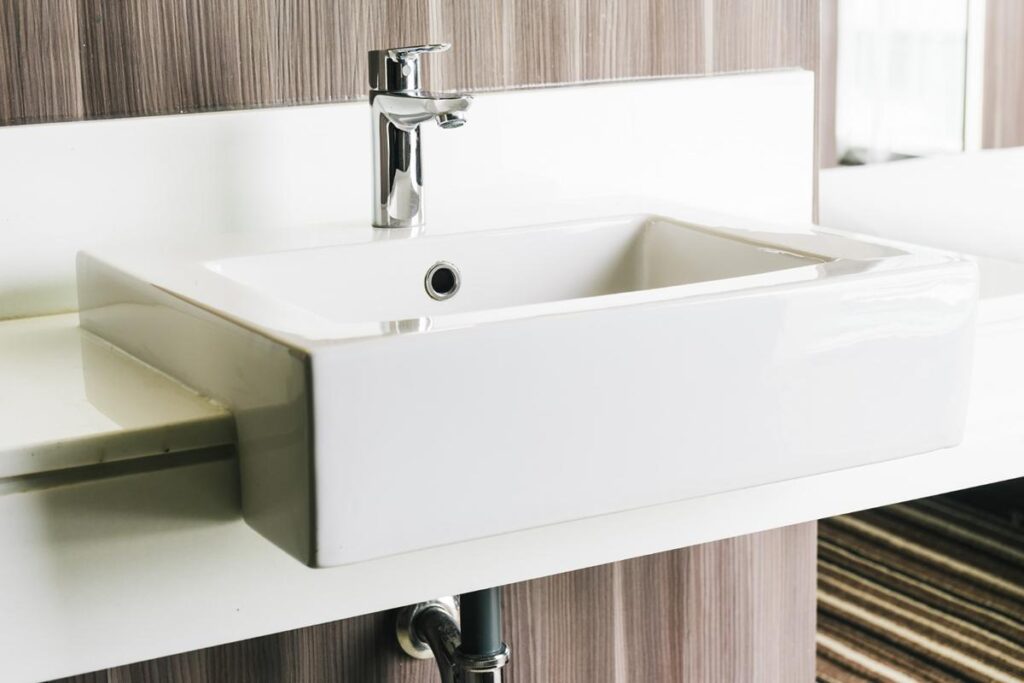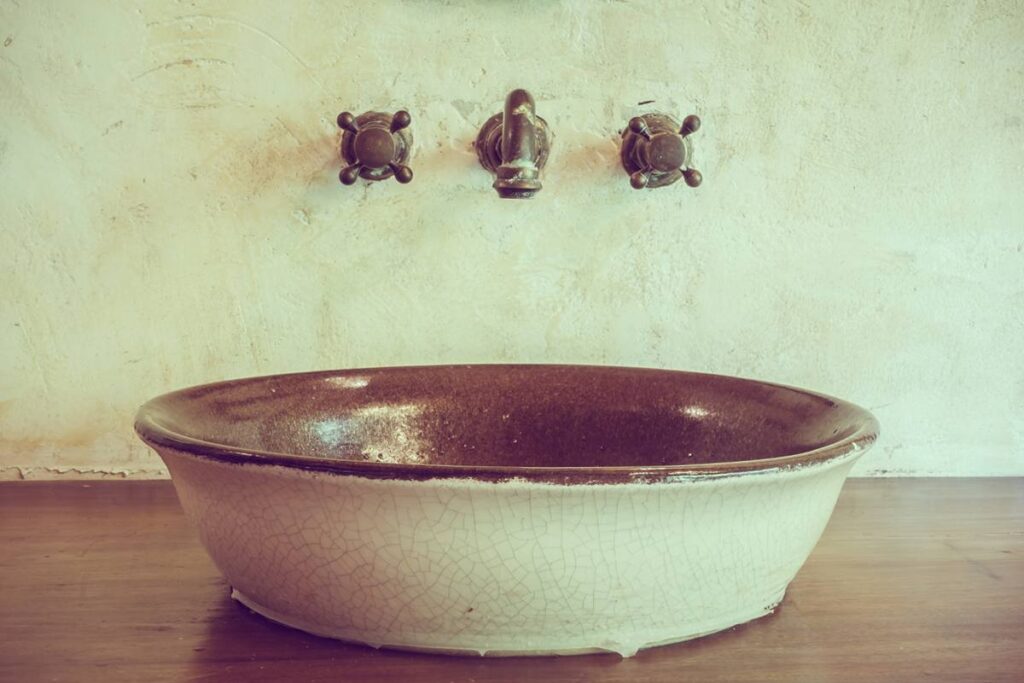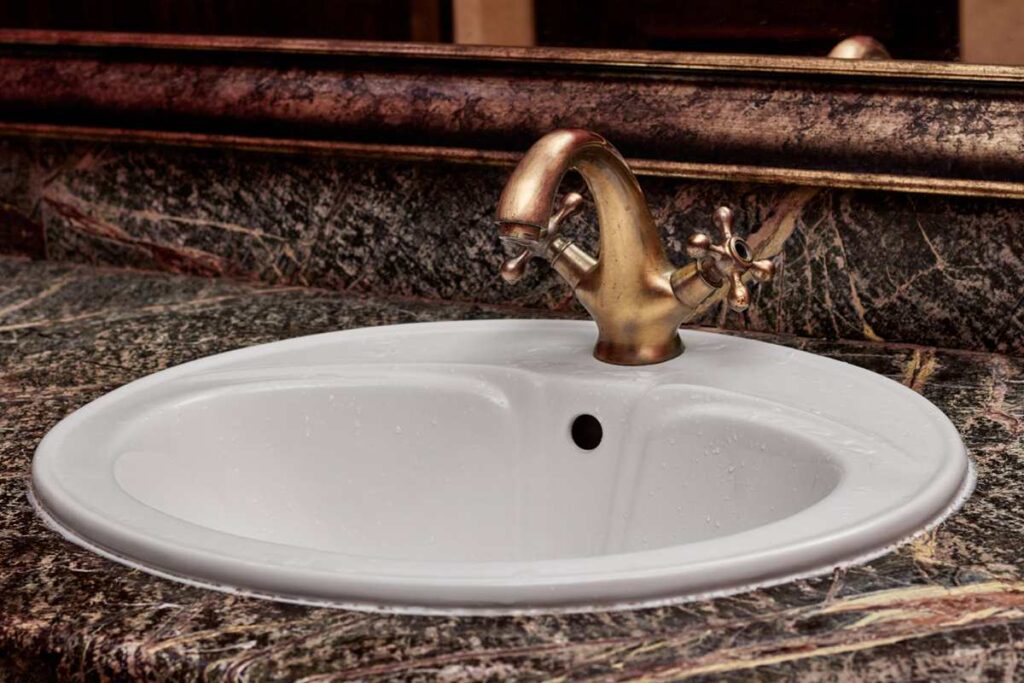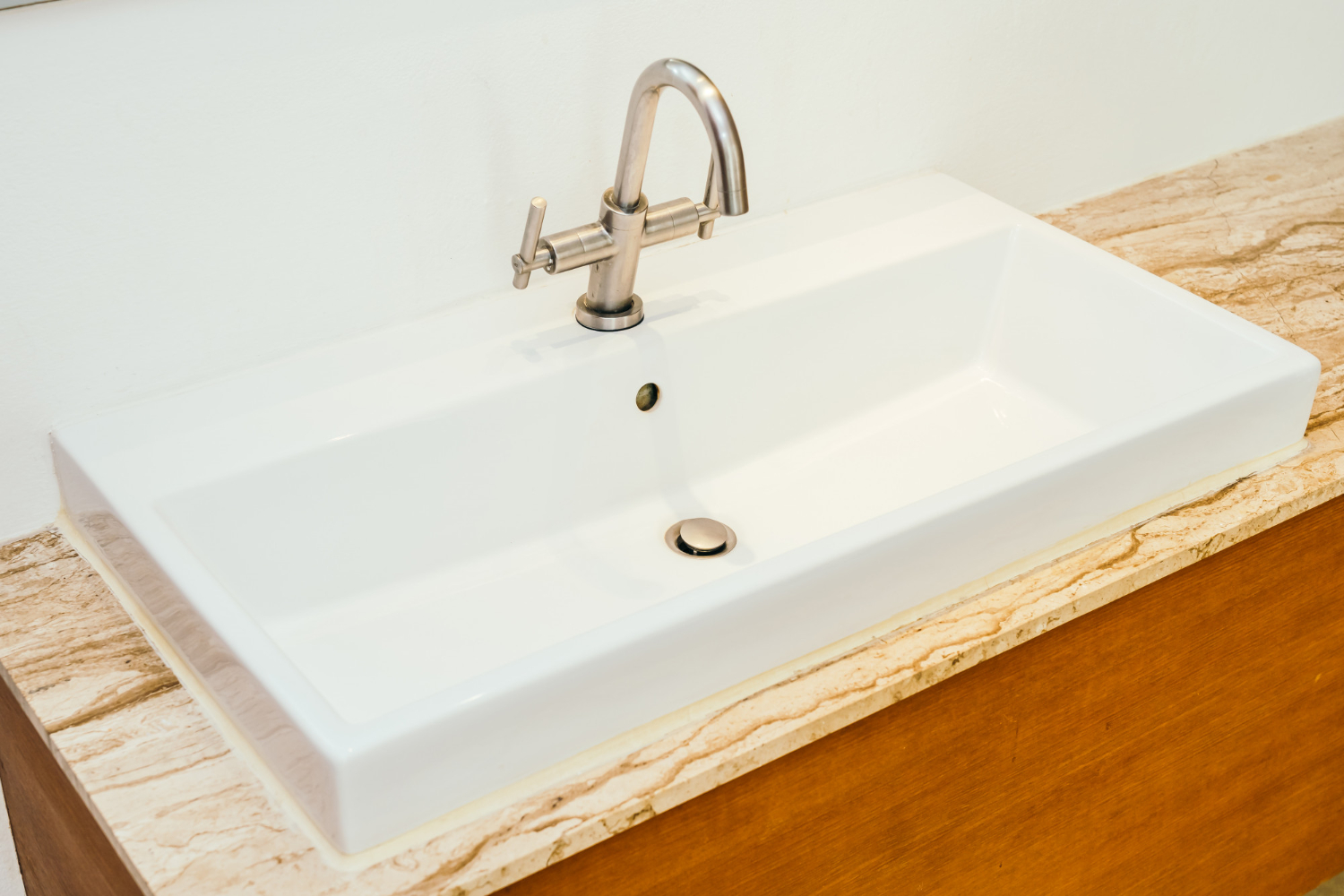What is a dry sink? It’s a type of old wooden furniture that people used before homes had running water. A dry sink held a bowl and pitcher for washing hands, faces, or dishes. It was often placed in kitchens or washrooms and became a practical part of early American life. In this article, you’ll learn the full history of dry sinks, how they were used, what they’re worth today, and smart ways to decorate with them. Whether you’re curious about antiques or looking for home décor ideas, this guide will help you understand everything about dry sinks in a simple way.
What is a Dry Sink?
A dry sink is a piece of old wooden furniture that people used before modern plumbing was common in homes. It usually has a flat top with a space to hold a bowl and a pitcher of water. The cabinet below was used to store towels, soap, or other washing supplies.
People used dry sinks in the 1800s and early 1900s. At that time, most homes didn’t have running water. So, they kept a water pitcher on top of the dry sink and used it to wash their hands or face.
It’s called a “dry” sink because it didn’t have any plumbing or running water. Unlike a regular sink, it stayed dry — the water was poured in and out by hand.
According to antique furniture experts and museum sources like the Smithsonian, dry sinks were mostly made of pine, oak, or walnut wood. They were often placed in kitchens or bedrooms and were a common part of early American homes.
How Was a Dry Sink Used in the Past?
In the days before indoor plumbing, people used a dry sink to wash up. It held a washbasin (bowl) and a pitcher of water on top. After pouring water into the bowl, they used it to wash their hands, face, or dishes.
Dry sinks were usually found in early American homes, especially in the kitchen, washroom, or even on the porch. These areas made it easy to pour out the used water outside or into a bucket.
Most dry sinks were made from solid wood like pine, oak, or walnut. Some even had metal-lined tops (like zinc or copper) to protect the wood from water damage. This clever design helped keep the furniture useful for a long time.
They weren’t just practical—they were also stylish. As a piece of antique furniture, the wooden washstand added charm to the home and showed how people lived before modern plumbing.
Today, many people refer to it as a water pitcher stand or a vintage washstand, especially when using it as a home décor item.
What is a Dry Sink Cabinet?
A dry sink cabinet is a unique version of the traditional dry sink. Unlike the classic washstand with just a flat top and basin space, the dry sink cabinet has lower storage beneath the basin area. This space is perfect for storing towels, soap, or other cleaning supplies, making it even more practical for home use.
The key difference between a dry sink cabinet and a regular washstand is that the cabinet-style dry sink offers closed storage. A regular washstand typically doesn’t have a storage area below the basin, while the dry sink cabinet provides a hidden compartment for extra storage, making it more functional and versatile.
These cabinets are still used and repurposed today in a variety of ways. Many homeowners use them in modern bathrooms as vanities, in kitchens as charming storage pieces, or even as entryway tables. Some people repurpose them into plant stands or decorative pieces in rustic or farmhouse-style homes.
Are Dry Sinks Still Used Today?
Yes, dry sinks are still used today, but their purpose has shifted. While they were once practical furniture pieces for washing, dry sinks are now often sought after for their decorative value and as part of antique collections. They bring a unique vintage charm to any home.
Modern uses for dry sinks include placing them in farmhouse-style homes as entry tables, transforming them into bathroom vanities, or even using them as plant stands to add a rustic touch to a space.
Here are some creative ideas for reusing dry sinks in your home:
- Farmhouse Entry Table: Place it in your entryway for a rustic, welcoming vibe.
- Bathroom Vanity: Repurpose the dry sink cabinet as a stylish wash basin or storage area in a bathroom.
- Plant Stand: Use it to display your favorite plants in a vintage setting.
- Side Table: Perfect for a cozy reading nook or living room.
- Kitchen Island: Use a dry sink with ample counter space as a functional piece in your kitchen.
- Repurpose as a Bar Station: Store liquor bottles, glasses, and accessories for a charming home bar setup.
- Hallway Console Table: Add storage space and character to a hallway.
- Craft Station: Perfect for organizing craft supplies in a home studio.
Dry Sink Ideas for Modern Homes

If you’re lucky enough to own a dry sink, you might be wondering how to give it new life in today’s home décor. Here are some creative repurposing tips to make your dry sink both functional and stylish:
Repurposing Tips:
- Bathroom Vanity: Transform your dry sink into a charming bathroom vanity. The storage area underneath can hold toiletries, and the basin space can house a small washbasin or be repurposed for decoration.
- Coffee Station: Use a dry sink as a coffee station in your kitchen or dining room. The top provides space for a coffee maker, cups, and accessories, while the cabinet below can store extra coffee supplies.
- Rustic Bar: Repurpose the dry sink into a rustic home bar. The open space on top can hold bottles, glasses, and cocktail supplies, and the cabinet area can store bar tools and additional liquor.
- Plant Holder: Dry sinks are perfect for showing off your favorite plants. Place a few potted plants in the basin area, and use the cabinet space below to store extra gardening supplies.
Old Use vs. Modern Use
Here’s a quick comparison between the original use and modern-day repurposing ideas for the dry sink:
| Old Use | Modern Use |
| Washing hands/face | Bathroom Vanity |
| Storing towels and supplies | Coffee Station |
| Holding water pitcher | Rustic Bar |
| Storing cleaning tools | Plant Holder |
What is a Dry Sink Worth Today?
The value of a dry sink today can vary greatly, depending on several factors. Antique dry sinks can range in value from $100 to $1000+, depending on their condition, rarity, and age. Collectors and antique enthusiasts often look for specific features that make these items more valuable.
Factors That Affect Value
- Wood Type: The type of wood used in the dry sink significantly impacts its value. Pine and oak are common, but rarer woods like walnut or mahogany can make the sink more valuable.
- Craftsmanship: The quality of the work put into the dry sink can affect its price. Handcrafted dry sinks with intricate details or unique designs are often more expensive than mass-produced versions.
- Maker’s Mark: If the dry sink has a maker’s mark or branding from a famous furniture maker, it can significantly increase its worth. Collectors value pieces from renowned artisans and manufacturers.
- Historical Use: Sinks with a historical background or that have a unique story attached to them can fetch higher prices. For instance, if a dry sink was used in a historical setting or has provenance from an important family, its value can increase.
How to Identify an Antique Dry Sink

Identifying an antique dry sink can be an exciting process for collectors and enthusiasts. There are several key signs and features to look for that will help you determine if a dry sink is truly an antique.
Signs of Age
Dovetail Joints: One of the key indicators of an antique dry sink is the presence of dovetail joints. These hand-cut joints were commonly used in older furniture and are a sign of craftsmanship and age.
Handmade Nails: Older dry sinks often feature handmade nails or cut nails, as opposed to modern, machine-made nails. These nails have a distinctive look and texture, adding to the authenticity of the piece.
Patina: Over time, the wood of an antique dry sink will develop a natural patina or aged finish. This gives the furniture a warm, rich appearance that can’t be replicated with modern techniques. Look for wood that shows signs of wear, fading, and aging.
Common Wood Types
- Pine: Often used in the construction of early American dry sinks, pine is softer and more prone to wear but can be found in many antique pieces.
- Oak: Known for its durability, oak was frequently used in antique dry sinks, giving them a robust and sturdy feel.
- Walnut: A rarer and more expensive wood, walnut was used for higher-end pieces, making dry sinks made from this wood particularly valuable.
Look for Marks, Carvings, or Labels
Many antique dry sinks have marks, carvings, or labels from the maker or manufacturer. These can help you trace the origin of the piece and determine its age. Look closely for:
- Carvings on the wood, which could include initials, dates, or decorative designs.
- Labels on the back or underside of the dry sink, which may indicate the maker’s name or the piece’s origin.
- Maker’s Marks, which are often stamped or engraved into the wood, adding to its value and historical significance.
How to Care for and Restore a Dry Sink

Taking care of and restoring an antique dry sink requires attention to detail and the use of proper techniques to preserve its beauty and value. Whether you’re cleaning or restoring a family heirloom or a recent find, the following tips will help you keep your dry sink in excellent condition.
Cleaning Tips (No Harsh Chemicals!)
When cleaning your dry sink, it’s essential to avoid harsh chemicals that could damage the wood or its finish. Instead, follow these simple steps:
- Dust Regularly: Use a soft, dry cloth to dust the surface regularly and prevent dirt buildup.
- Mild Soap and Water: For tougher stains, mix mild soap with warm water and apply it gently using a soft cloth. Avoid soaking the wood, as too much water can cause warping.
- Avoid Abrasive Scrubbers: Never use steel wool or abrasive pads, as they can scratch and damage the wood.
- Furniture Polish: Use a furniture polish or beeswax for wooden surfaces to maintain the shine without harming the finish.
Protecting Wood Finish
Protecting the wood finish is crucial to maintaining the appearance and longevity of your dry sink. Here’s how to do it:
- Use Coasters and Mats: Always use coasters or mats under cups, vases, or any objects placed on your dry sink to prevent water rings or scratches.
- Avoid Direct Sunlight: Prolonged exposure to sunlight can cause the wood to fade or warp over time. Try to keep your dry sink out of direct sunlight to maintain its finish.
- Humidity Control: Wood is sensitive to humidity. Make sure the area where your dry sink is placed is not too damp or dry, as this could cause the wood to crack or swell.
Light Restoration vs. Full Refinishing
When it comes to restoring your dry sink, there are two primary options: light restoration and full refinishing. Understanding the difference will help you decide how much work is needed.
- Light Restoration:
- Polishing and Touch-Ups: For minor wear and tear, such as fading or slight scratches, a light restoration may be sufficient. This includes polishing the wood with a soft cloth and using furniture touch-up markers for small scratches.
- Cleaning the Finish: Simply cleaning and reapplying wax or polish to the surface can restore its shine and protect the finish.
- Polishing and Touch-Ups: For minor wear and tear, such as fading or slight scratches, a light restoration may be sufficient. This includes polishing the wood with a soft cloth and using furniture touch-up markers for small scratches.
- Full Refinishing:
- Sanding and Stripping: If the dry sink has significant damage or the finish is worn, you may need to sand and strip the surface before reapplying a new finish. This process requires more time and effort, as it involves removing the old finish completely.
- Re-staining: After sanding, you may want to re-stain the wood to restore its natural color. Be sure to use a stain that matches the original wood type to maintain its authenticity.
- Applying a New Finish: After refinishing, applying a fresh coat of polyurethane or lacquer will protect the surface and restore its appearance.
- Sanding and Stripping: If the dry sink has significant damage or the finish is worn, you may need to sand and strip the surface before reapplying a new finish. This process requires more time and effort, as it involves removing the old finish completely.
Where to Find Dry Sinks Today
Finding a dry sink today requires a bit of searching, but there are several great places where you can find these antique pieces. Whether you’re a collector, decorator, or just someone looking to add a unique piece of furniture to your home, here are the best places to look.
Antique Shops
One of the best places to find authentic dry sinks is at antique shops. These shops specialize in vintage furniture and often carry well-preserved items like dry sinks. Visiting an antique shop gives you the opportunity to see the piece in person, assess its condition, and often haggle on the price.
- Tip: When buying from an antique shop, ask the shopkeeper about the history and provenance of the dry sink. They might provide valuable insights or even a certificate of authenticity.
Estate Sales
Estate sales are another great source for finding dry sinks. These sales often feature a wide range of vintage furniture, including pieces that have been in the family for generations. Estate sales can be particularly useful for finding well-loved and authentic dry sinks that may not be available in mainstream shops.
- Tip: Keep an eye on local listings or estate sale websites to find sales in your area. Arriving early gives you the best chance to snag valuable items.
Online Marketplaces (eBay, Etsy, Facebook Marketplace)
Online marketplaces like eBay, Etsy, and Facebook Marketplace have become go-to platforms for finding vintage furniture, including dry sinks. These platforms offer a wide selection of pieces from sellers across the world, giving you access to a broader market.
- eBay: Ideal for auction-style purchases, eBay lets you place bids on items or buy them outright.
- Etsy: Known for its collection of vintage and handcrafted items, Etsy is an excellent choice for finding antique furniture like dry sinks.
- Facebook Marketplace: A local platform where you can find great deals from people selling furniture in your area. It’s perfect for checking out dry sinks near you.
Tips on Verifying Authenticity Before Buying
When purchasing a dry sink, especially online, it’s important to verify its authenticity to avoid purchasing a reproduction or a poor-quality piece. Here’s how to ensure the piece you’re buying is a true antique:
- Check for Signs of Age: Look for telltale signs of an antique dry sink, such as dovetail joints, handmade nails, and patina. If the piece looks too new or the finish seems too perfect, it may be a reproduction.
- Research the Seller: Make sure the seller has a good reputation. Look for reviews or ratings on platforms like Etsy, eBay, or Facebook Marketplace to confirm their reliability.
- Ask for Details: Always ask the seller for detailed photos and a description of the item, including information on its origin, age, and condition. If they can provide historical details or maker’s marks, it’s a good sign the dry sink is authentic.
- Verify the Wood Type: Most antique dry sinks are made from oak, pine, or walnut. If the wood looks unfamiliar or too new, the piece might not be an antique.
FAQS
What is the point of a dry sink?
A dry sink was traditionally used before indoor plumbing to hold a water pitcher and washbasin. It allowed people to wash their hands and face without running water. Today, they are repurposed as decorative pieces or functional furniture.
What is the difference between a dry sink and a wash stand?
A dry sink typically has a closed storage area underneath the basin, while a wash stand is more of an open frame with a shelf. Dry sinks were designed to keep water and supplies out of sight, while wash stands were simpler.
Does a dry sink have a drain?
No, dry sinks do not have drains. The name “dry” refers to the absence of plumbing or water drainage, as they were meant to hold a pitcher and basin for washing, without a built-in drainage system.
What years were dry sinks used?
Dry sinks were commonly used in the early 19th century and throughout the late 1800s. They were popular in homes without indoor plumbing, before the widespread installation of modern plumbing systems.
Why is it important to dry the sink?
It’s important to dry a dry sink to preserve the wood finish and avoid moisture damage. If left damp, it can cause the wood to warp or crack, affecting both its aesthetic appeal and longevity.
Why do you need two sinks?
Having two sinks, such as in a bathroom vanity or kitchen setup, helps improve functionality and organization. It allows for tasks like washing hands while someone else can clean or prepare food without interruption.
Can a dry sink be used for modern purposes?
Yes, dry sinks are often repurposed for modern uses like bathroom vanities, coffee stations, or plant holders. Their rustic charm adds a unique touch to any space.
How can I tell if my dry sink is an antique?
To determine if a dry sink is an antique, look for signs of age such as dovetail joints, handmade nails, and patina on the wood. Also, check for maker’s marks or other identifying labels.
Are dry sinks worth money?
Yes, dry sinks can be worth anywhere from $100 to over $1000, depending on factors like condition, rarity, and age. Antique dry sinks in excellent condition can fetch higher prices from collectors and antique enthusiasts.
Conclusion
In conclusion, a dry sink is a piece of antique furniture that once served as a washstand before the days of indoor plumbing. Originally used to hold a water pitcher and washbasin, these charming wooden pieces have stood the test of time. Today, they are valued not only for their historical significance but also for their aesthetic appeal and versatility. Whether repurposed into modern bathroom vanities, coffee stations, or even used as rustic plant holders, dry sinks offer a unique blend of functionality and vintage charm.
So, the next time you come across a dry sink, you’ll know it’s more than just a piece of furniture; it’s a connection to the past, making it both a collectible item and a functional addition to modern homes.










